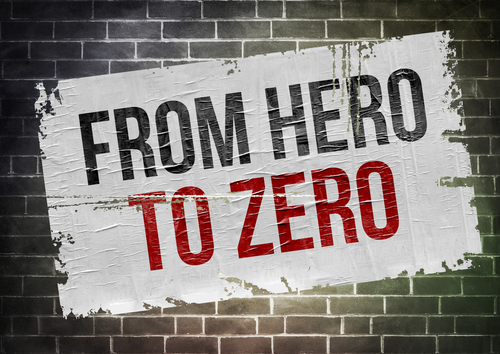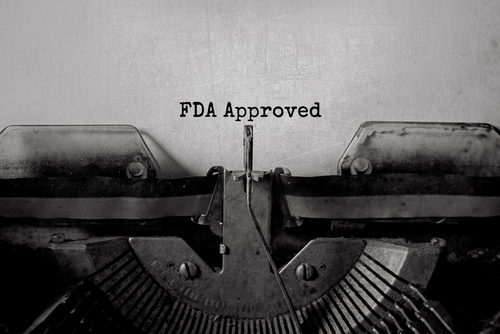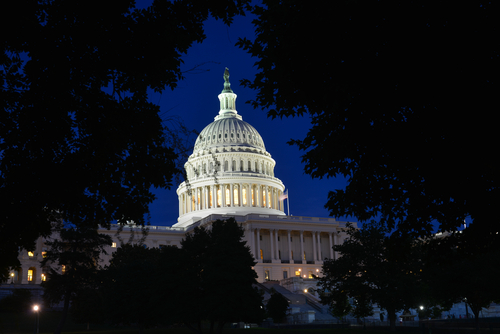Introduction
If [the] book be false in its facts, disprove them; if false in its reasoning, refute it. But, for God’s sake, let us freely hear both sides, if we choose.’
Thomas Jefferson

It is my opinion the most fundamental, the most important important motto of medicine is primum nil nocere (First do no harm), a phrase which it is the epitome of the medical profession. A phrase that entered the 1847 book ‘Physician and Patient’ to become part of the Hippocratic oath dedicated to clinician/Pathologist Auguste Francois Chomel (1788-1858). This most honorable term means that ‘given an existing problem, it may be better not to do something, or even do nothing than to risk causing more harm than good’. Conventional medicine as it has developed have disgraced their own profession by their behavior in treating the sick and infirmed with complete disregard for human life ( I refer to the system, not individual physicians, very many are dedicated to their profession and put their patients first in trying to help them, but are hampered by an inefficient healthcare system that can’t even allow doctors to do their job by only allowing 10 minutes.patient in western countries, and ER doctors are the top of my honorary list) which to me is precious, every human alive is precious, and the young and Innocent require special protection. The health profession has became a money driven profession that has defiled the very notion of Primum nil nocere which should now be replaced with Pecunia Primum (First make money). The association of Hippocrates with conventional medicine is an insult to one the greatest men that ever lived..do medical professionals still sign the Hippocratic oath ?..Do they know or even care who Hippocrates was?
What a Complex Web We Weave

The ‘Truth’ is in the Research Paper

To inform oneself to make the right choices especially for medical reasons you want to be confident when consulting the literature on vaccine efficacy and safety studies that they convey honest and trustworthy data and results which could be negative or positive or a mixture of both. Evidence suggests that medical research and study material is compromised by conflicts of interest, premeditated bias under pharmaceutical/regulatory agency control. Pharmaceutical manufacturers of drugs and vaccines sponsor research on their own products, the outcome of which is obviously going to be bias, and may authors who write about vaccine safety are paid consultants for the vaccine producers, another obvious bias. Medical journals rely on advertising revenue from pharmaceutical companies, another bias. The CDC also receives money via a non-profit CDC foundation indirectly amounts to paid bias. Even congress and their delegates are honeymooned by pharmaceutical lobbyists, another paid bias to the point where congress was blackmailed by the Pharmaceutical industry This was evidenced in 1986 when they informed congress that it was not in their interests to continue manufacturing vaccines if they were to face litigation whenever a child or adult was injured as a result of a vaccine. And Congress conceded by exempting them from any lawsuits.
The Hero to A Zero

Scientific fraud does occurs such as in the case of Professor Hwang Woo Suk a prominent South Korean researcher from Seoul National University concerning his work on embryonic stem cells and the use of somatic cell nuclear transfer (SCNT). The idea was to create a viable embryo from an Oocyte(egg cell) and implanting a donor nucleus or body cell to effectively clone an organ for transplantation for example from the same host to avoid immune system rejection. His work between 2004-2005 heralded the creation of 11 patient specific stem cell lines and people across the globe responded to Woo-Suk’s website announcing his success wanting ‘cloned’ organs to save a family member, but as it turned out his data on SCNT was bogus and the great hero became a big zero in the eyes of the South Koreans.
Falsifying/Fabricating the Data

A systematic review and meta analysis of survey data conducted by Daniele Fanelli in 2009 found that out of 21 surveys 5% of scientists said that they had falsified, fabricated or modified data to improve results, and a further 33% admitted that colleagues of theirs had falsified research data, and another 72% knew about other questionable research practices (e.g eliminating data points and altering the design, methodology or results of a study because of applied pressure from the funding source) committed by their colleagues. One survey revealed that 81% of research trainees in the biomedical sciences would be willing to fabricate data to win a grant or publish a paper.
Conflicts of Interest – The FDA

The problem with the current system is the non existence of an independent body..like a ‘Higher Power’ that are ‘untouchables’ in terms of industry influence, regulatory pressure and answerable only to select members of congress that have ruling authority and themselves are impartial without any preconceived ideas or perception..I know what your thinking..are you kidding you are an idealist,,a dreamer..well maybe I am. The actual mission of the FDA, and their federal remit puts the agency in a difficult position to actually be impartial. Its mission is to protect the public health by assuring the safety, efficacy and security of human and veterinary drugs and to insure the public receive accurate science based information they need in the use of medicine and food to improve health.
Everything is Good at the FDA

It would be extremely unlikely that the FDA would sponsor any study that would shine a poor light on any medicine or food that it is commissioned to uphold for public safety. Unfortunately it goes beyond its remit to defend any medicine or food that is studied and proven to be unsafe or ineffective and to cite studies that refute their findings. The FDA’s funding mechanism is a result of the 1992 Prescription Drug Act that specified the Pharmaceutical industry pay the FDA to gain approval for their products. However, this mechanism has turned industry funding into industry influence since now the FDA are reliant on the funding. Finally, the National Vaccine Injury Compensation Program (NVICP) supports children that have been vaccine damaged. Since both FDA and NVCIP both report to the Department of Health and Human Services, again it is most unlikely that the FDA will defend such vaccine damaged reports despite the 5,600 claims that had been filed mostly by parents with vaccine injured children, as a direct result of injury including autism triggered by vaccine administration.
Conflicts of Interest – The CDC

Everything is great at the CDC
The difficulty to establish impartiality is also faced by the CDC whose primary mission is the prevention and control of disease. One of its tasks is to decide on vaccine recommendation and the preparation/administration of the vaccine schedule imposed on the American population. Similarly it is the Department of Health in the UK that decides on vaccine administration and scheduling on advice from the Joint Committee on Vaccination and Immunization (JCVI). Since the CDC position is to promote vaccine administration, the CDC could hardly stand behind research that uncovers evidence that vaccines cause injury and harm, so they are obliged to contradict the study outcome as in the case of the review of the US universal varicella vaccination program: Antelope valley by Goldman featured in the previous article. In the excellent article by Gayle Delong on Conflicts of interest in Vaccine safety research in 2012 where she relates the story of the CDC when it commissioned the Institute of Medicine (IOM) to evaluate vaccine safety in 2000, specifically to uncover any possible links between the MMR vaccine and its Thimerosal preservative ingredient toward autism.
Of course there is no association between vaccines and autism
During one discussion Dr Marie McCormick who was the head of the Immunization safety review committee of the IOM at the time said “The CDC wants us to declare, well these things (vaccines) are pretty safe on a population basis” and further into the discussion McCormick decided “ we are not going to come down that (autism) is a true side effect of vaccines…” (my apologies for the rotten English) but she basically announced their proposed result before the study had begun. Then there is the issue of tenure for some CDC employees and what is referred to as the ‘Revolving door’ between the CDC and industry, such as in 2009 when the CDC director Dr Julie Gerberding left her CDC position and within a year became president of Merck vaccine division. While she was the CDC director during 2002-2008 she definitely did not( would not) disagree with the final conclusions from the IOM study which was ‘no link between vaccines and any neurological disorders was found’ ( surprise ).
We are an independent, impartial agency…well we were..
So two glaring conflicts of interest exist..tow the CDC party line..and maybe you can jump ship into a nice position with industry at an appropriate time. Prior to 1983 the CDC were an independent impartial regulatory agency the physician’s were proud to have look after their interests, but that all changed when the CDC was authorised to accept external ‘gifts’ from industry and other private enterprises. In addition Congress passed a bill to encourage industry relations by creating a CDC non-profit Foundation that began in 1995. In fiscal year 2014, there was $52 million sitting in the foundation, $12 million of which were corporation donations, $16 million for individuals and philanthropic sources. Some ‘donations’ are earmarked for special projects such as the $600,000 received from Genentech (Parent company Roche)to promote testing and treatment into viral hepatitis C. Other donations came from Janssen ($1.5 million 2012-2013), and in 2011-2012 donations from Merck ($915,149), Genzyme($762,000), Sanofi-Aventis ($600,000) and Abbott Labs ($550,000) were received. Another glaring conflict of interest…CDC bought and paid for.
CDC Punishment Prerequisites

Get this, if someone in the CDC decides to do something worthy that just happens to upset somebody in industry the CDC get punished for it. An example occurred in 1996 when the CDC decided to research gun violence the National Rifle Association an organization largely underwritten by gun manufacturing lobbied congress and pro-gun representatives cut $2.6million from the CDC budget (the exact amount the CDC had spent during the previous year on Firearm injury research). Then the funding was later restored on the condition that none of the funds were to be used to advocate or promote gun control. As it so happens the $10 million the President Obama asked congress to put aside in 2012 and 2016 for research into preventing gun violence after the Sandy Hook elementary school massacre..and the funds request was never forthcoming. Why doesn’t congress simply tear up the Declaration of Independence and rewrite their own.
Conflicts of Interest – US Congress

I am afraid it’s the same story here, yes there have been several enquiries into vaccine safety and vaccination/autism associations but none of it has gone anywhere, and why haven’t they found anything because they’re not looking for anything. Members of congress are not medically trained nor do they devote enough time to dig into the issues at hand. There publicly broadcast interrogation sessions is just ‘ putting a show on for the folks back home’. There are issues of safety and efficacy toward vaccines without a shadow of a doubt, but there is too much evidence showing that the vaccine as a combination of ingredients or one ingredient is unnaturally, and negatively stimulating the immune system and many cases triggering the immune system to regress into confusion which is why there are many reports of auto-immune conditions. As I stated before those children who develop autism or some other neurological disorder after a vaccine shot possibly were on the verge of this condition because their gut flora was in a dysbiotic state, and the vaccine was ‘the final straw’.

Congress..Bought and paid for
Members of the house of representatives serve 2 two year terms and are considered for re-election every even year, while Senators serve 6 year terms and elections to the senate are staggered over seven years. None of these positions guarantee lifetime tenure (unlike the House of Lords in the UK) so they are always looking for the next ‘bread winning’ job. Added to that there are at least 3 pharmaceutical lobbyists for every member of congress (Again from Gayle Delong on Conflicts of interest in Vaccine safety research article she informs us that the ‘Center for Responsive Politics reports the Pharmaceutical/Health products industry spent over $2.3 billion between 1998-2011 to lobby elected officials and candidates.) and we have that ‘Revolving door’ policy where members of congress that end their term without re-election need a job and some of them end up as pharmaceutical lobbyists (over half of the lobbyists employed by the pharmaceutical industry had worked in congress or another brach of the federal government, while 35 were former members of congress( statistics supplied by Gayle Delong ).
Who has your back??

So Mum’s and Dad’s, who in government has your back?? If you read the ASTO (Association of State and Territorial Health Officials) 2011 volume II all the photographs are showing lots of people smiling some with lab coats, Doctors holding patients hands smiling, happy families are shown eating fresh vegetables and smiling and an older woman stretching (presumably after a jogging session ) smiling again and a beautiful pregnant woman preparing fresh vegetables and a young girl biting into a juicy granny smith. Quotations from the document such as ‘ State health agencies focus on improving public health and public health infrastructure; preparedness; implementation of effective health policies; assurance of access to health care systems and services; increasing the availability and use of data and evidence; and quality improvement, performance management and accreditation related activities’.
Where are the statistics for the National Vaccine Injury Compensation Program (NVICP)?
Where are the statistics that explain why 100,000 people are dying from health care?
Where are the statistics to explain why $2 Trillion is being spent on people who are chronically sick and/or disabled?
Why is 1 in 6 children have a learning disability, 1 in 9 with asthma, 1 in 10 diagnosed with a mental disorder, 1 in 13 severely allergic to food, 1 in 20 epileptic, 1 in 50 developing autism, and 1 in 400 with diabetes…why..why??
….it’s just a show for the folks at home where everybody lives like the Waltons.
Conflicts of Interest –
Research and Biomedical Publications

A researcher has a conflict of interest if and only if he/she has personal, financial, professional, political, or legal interests that have a significant chance of interfering with the performance of his/her or ethical or legal duties.
The average parent wanting to inform themselves on vaccine safety and efficacy and make a decision on whether to vaccinate or abstain is not going to troll through PubMed’s hundreds of published research on clinical trials and safety studies. They simply do not have time to read the stuff let alone interpret and understand its content. Even if the papers were bereft of premeditated bias ( a term used to define statisticians and researchers who knowingly falsify data and cook the results because they are acting on the adage ‘Whose bread I eat, his praise I sing (print)) which they are not), interpretation of the results is difficult. In his Paper ‘Detecting bias in biomedical research:looking at study design and published findings is not enough’ John Henry Noble jr cites Richard Smith former editor of the British Medical journal who states that medical journals are an extension of the Pharmaceutical industry’s marketing arm allowing them to commercialize the content by always portraying favourable outcomes while relying on the journals failure to disclose conflicts of interest of the authors or writers that are on the payroll of the pharmaceutical companies.
The journal does not really fail on this issue they simply turn a blind eye since part of their revenue is heavily reliant on the Pharmaceutical companies requests and large scale purchase of article reprints (Gayle DeLong in her article informs us that during 2005-2006 the BMJ reported that the selling of 1 million reprints represents 3% of their revenue while the Lancet when it sells 11 million reprints this represents 41% of their total revenue, the other American Medical journals failed to respond to the request for revenue information) and advertising within the journal, the very plug they would pull if the journal decided to be more diligent to eliminate potential conflicts of Interest. Furthermore, Smith goes on to say that the strategy of the pharmaceutical companies is simple ‘ just ask the right questions, don’t resort in suppressing negative data, just rely on the positive results. Conduct multi-centre trials and publish different results from different centers at different times in different journals relying on bulk dissemination of data, and the only potential problem are the regulatory agencies who might decide to unravel the deception but since they are usually understaffed they won’t pose a threat.
“[…] The problems I’ve discussed are not limited to psychiatry, although they reach their most florid form there. Similar conflicts of interest and biases exist in virtually every field of medicine, particularly those that rely heavily on drugs or devices. It is simply no longer possible to believe much of the clinical research that is published, or to rely on the judgment of trusted physicians or authoritative medical guidelines. I take no pleasure in this conclusion, which I reached slowly and reluctantly over my two decades as an editor of The New England Journal of Medicine.”
(Drug Companies & Doctors: A Story of Corruption, Jan 15 2009)
References/Acknowledgments:
- Somatic cell nuclear transfer Wikipedia
- Cloning scandal of Hwang Woo-Suk Stem cells, Biology, Bioethics & applications
- The Solution Homeoprophylaxis: The vaccine alternative Kate Birch, Cilla Whatcott Book 2012
- How many scientists fabricate & Falsify research: A systematic review & meta analysis of survey data Daniele Fanelli May 2009 PLOS One
- Detecting Bias in Biomedical research; Looking at study design and published findings is not enough John Henry Noble jr Monash Bioethics April 2007
- Conflict of interest in vaccine safety research Gayle DeLong 2012
- Millers Review Critical vaccine studies Neil Miller 2016
- ASTO (Association of State and Territorial Health Officials) 2011 volume II
- CDC: Protecting the private good BMJ Jeanne Lenzer 2015
- Quotes on conflicts of interest Goodreads
Author: Eric Malouin